Malpolon monspessulanus
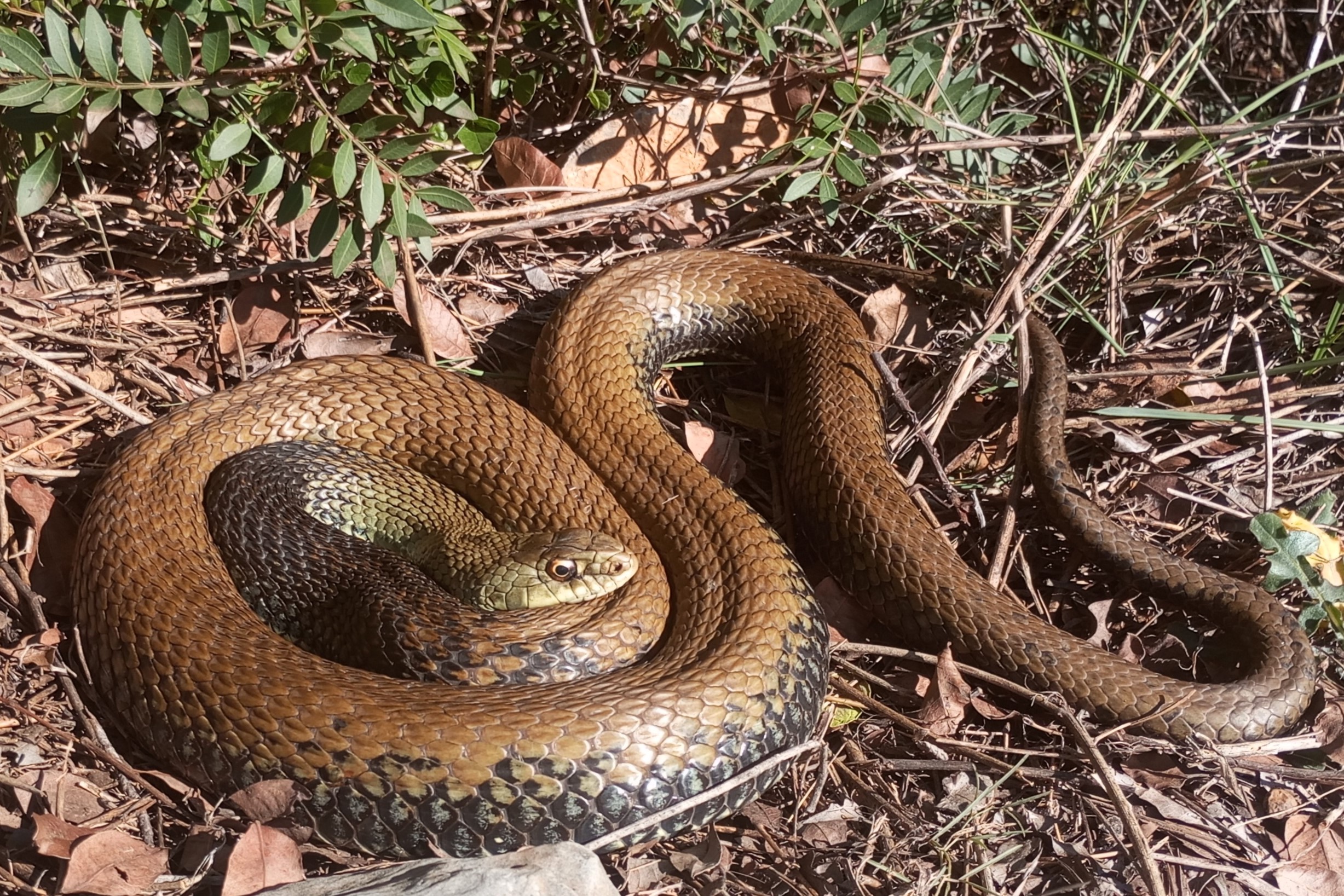

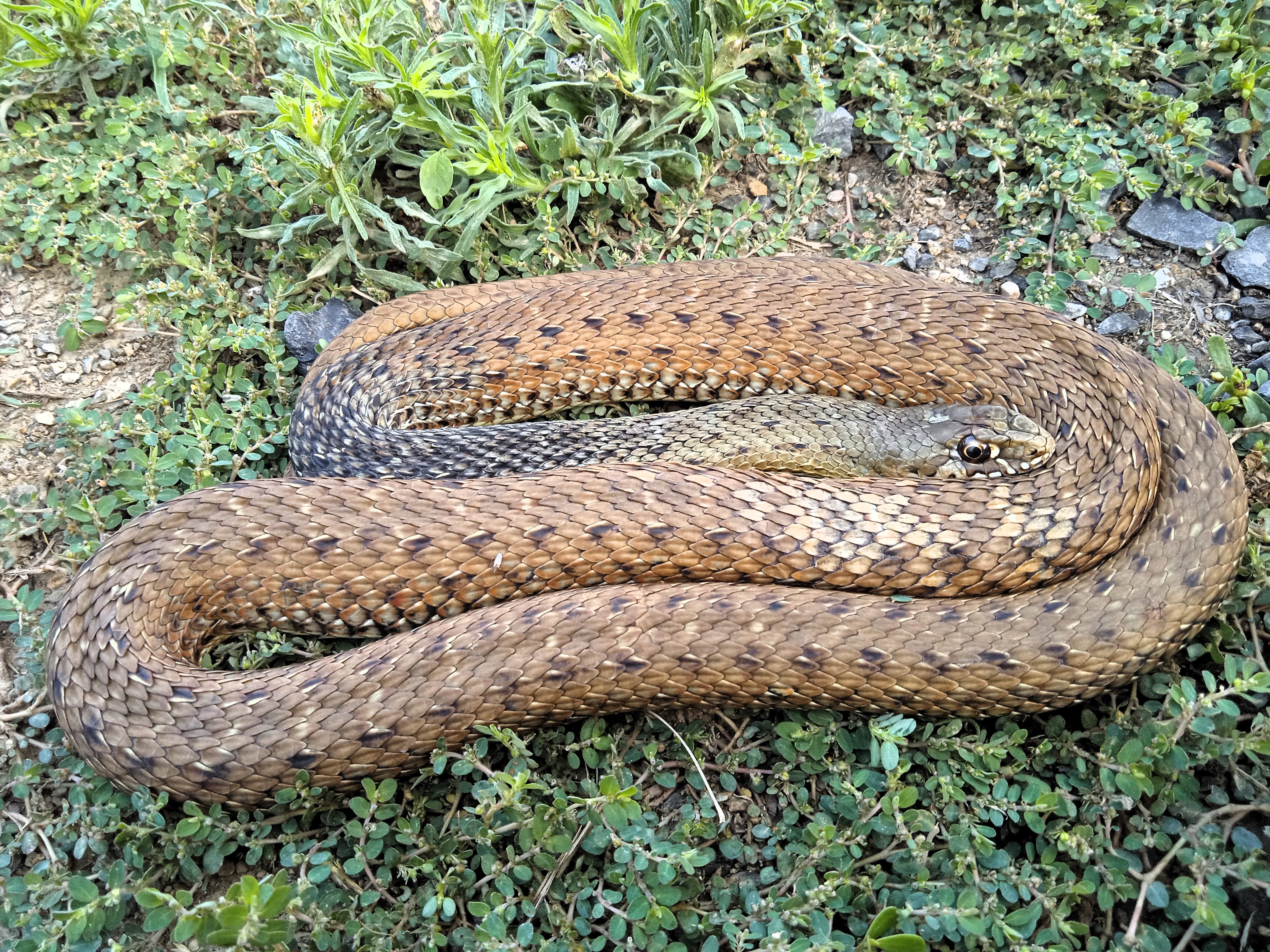
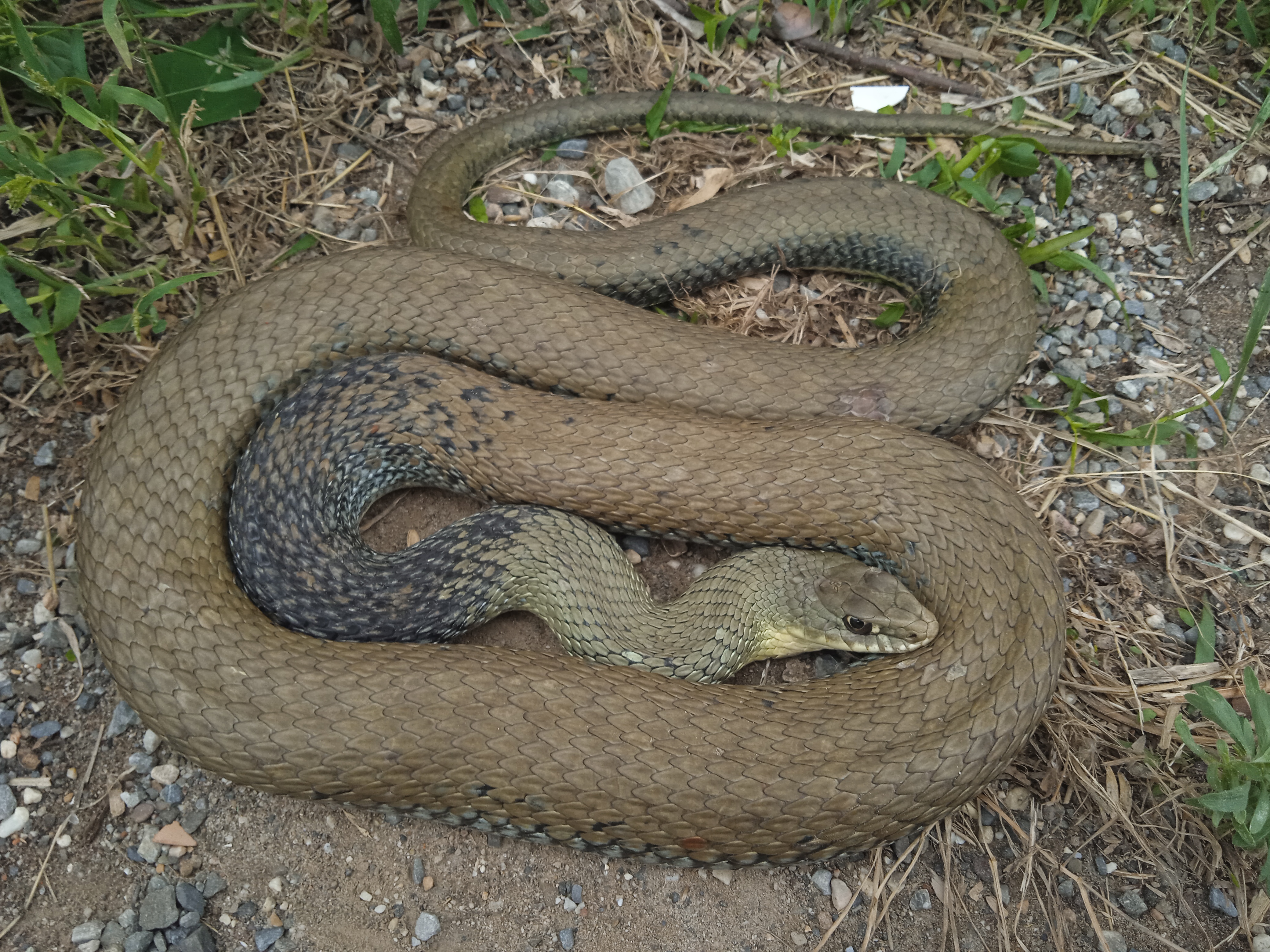
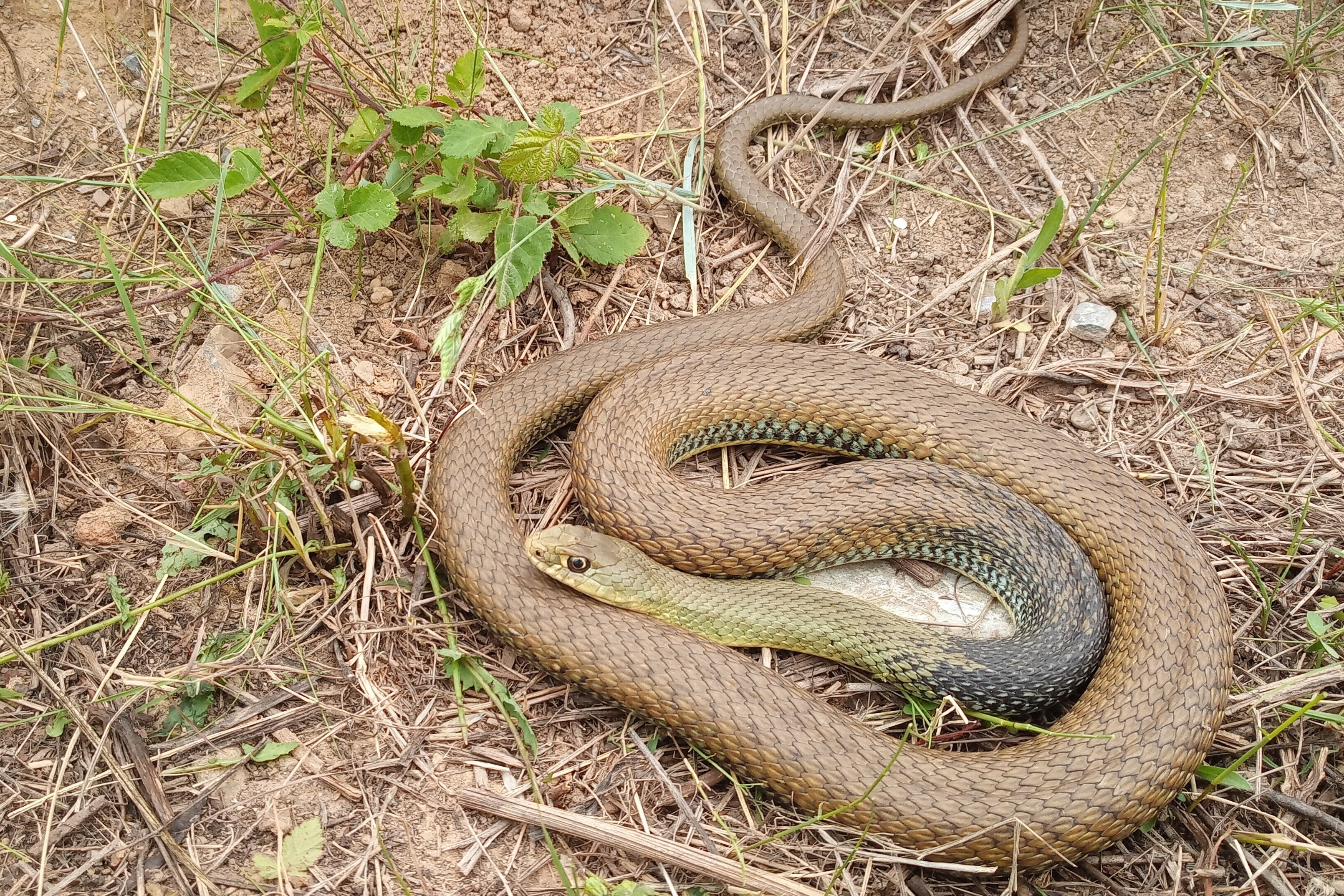
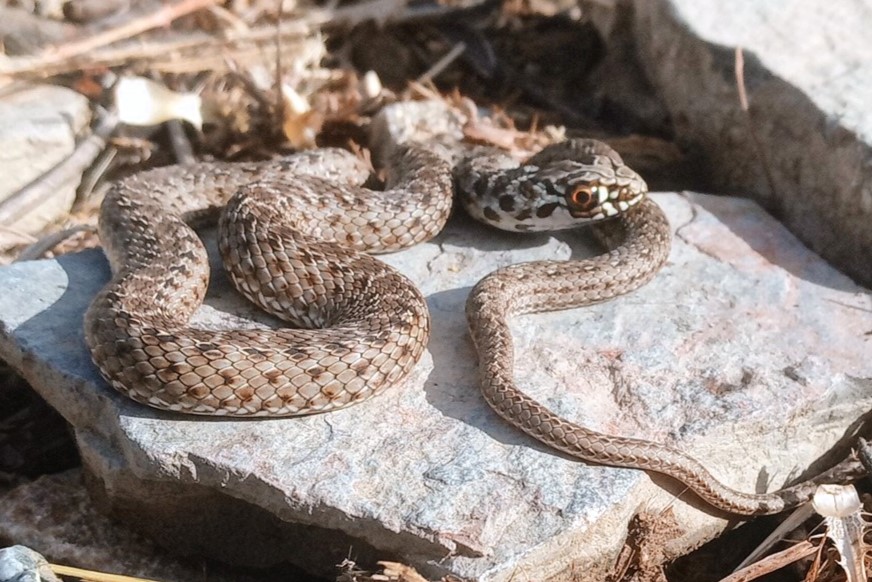
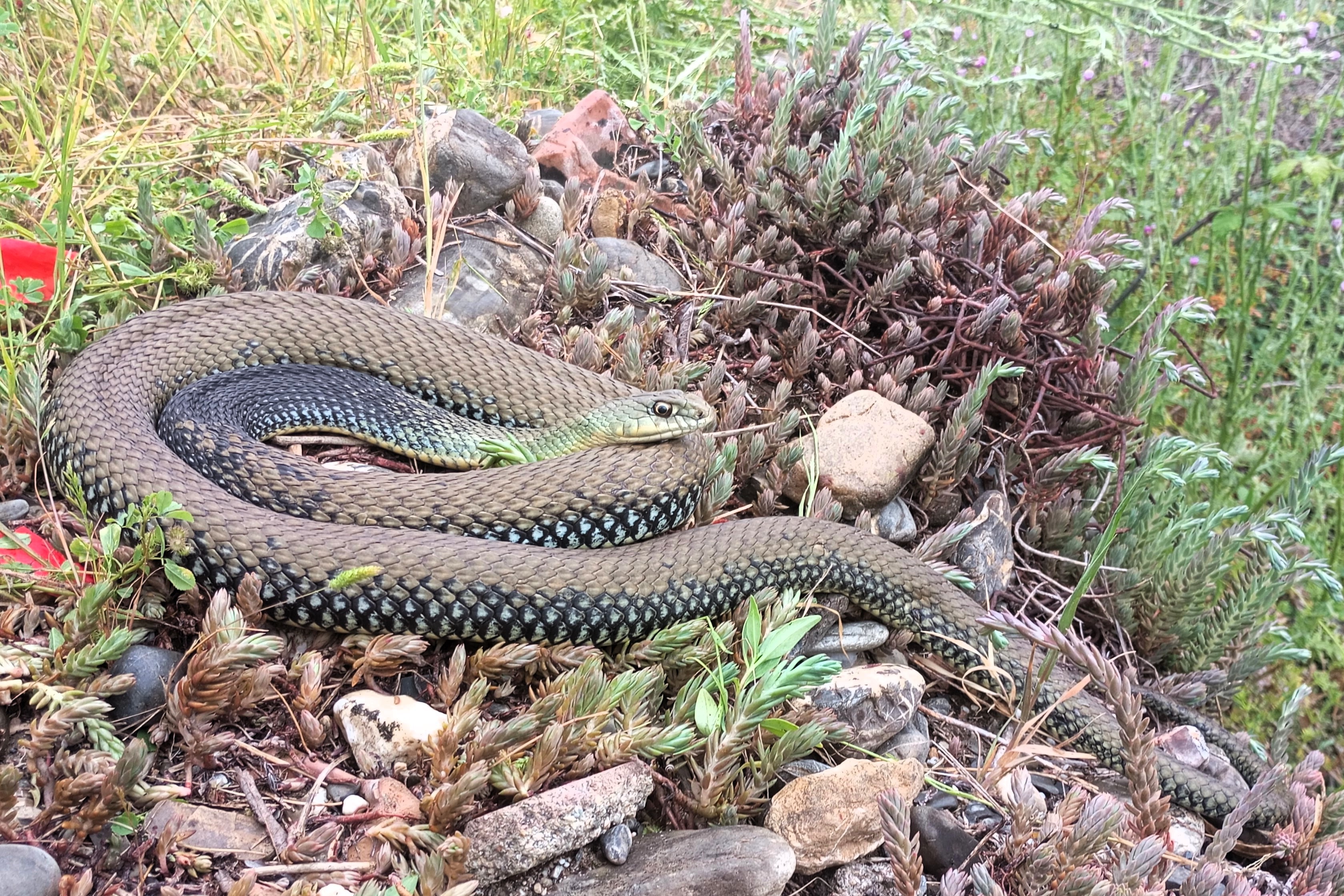
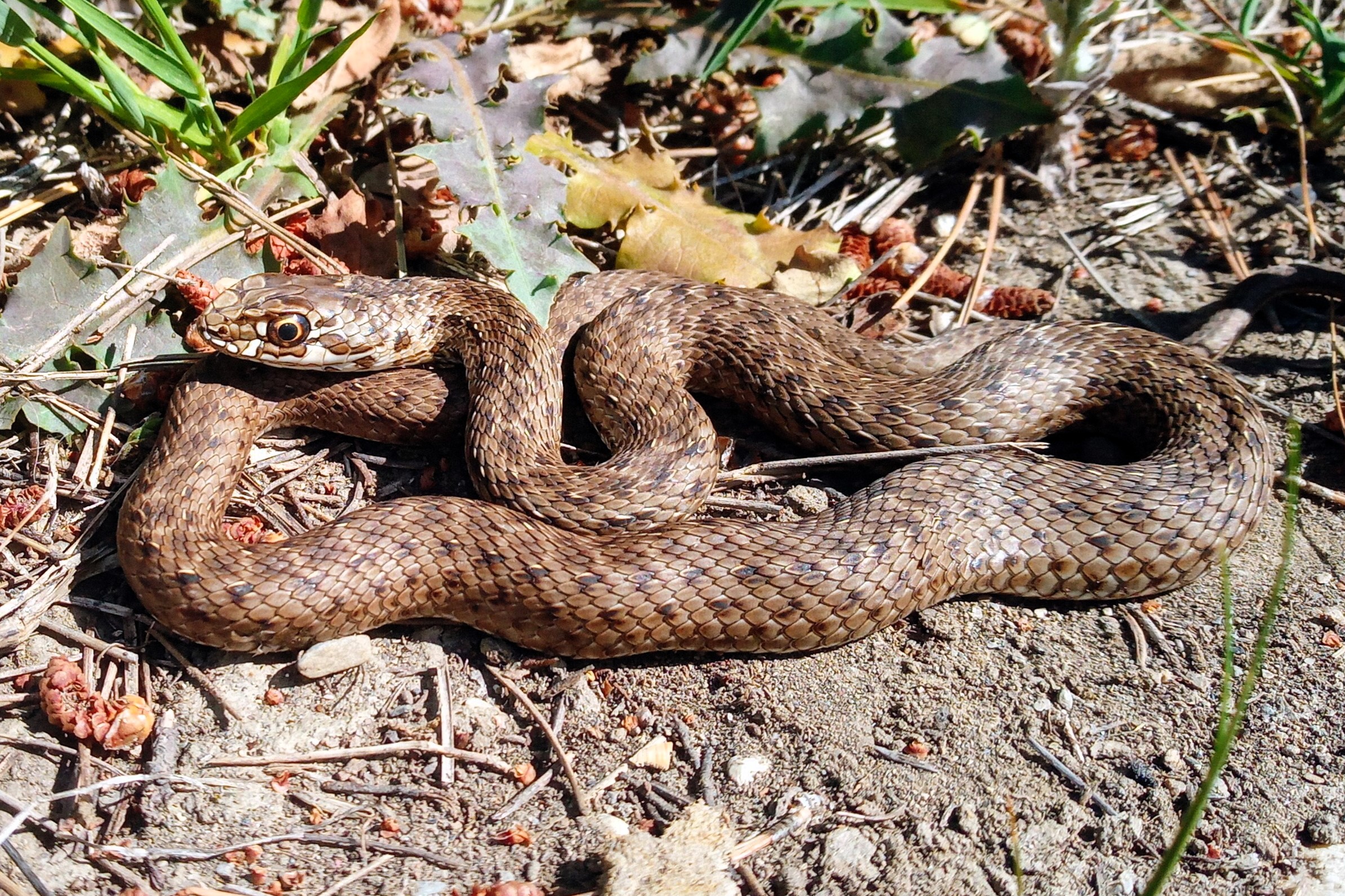
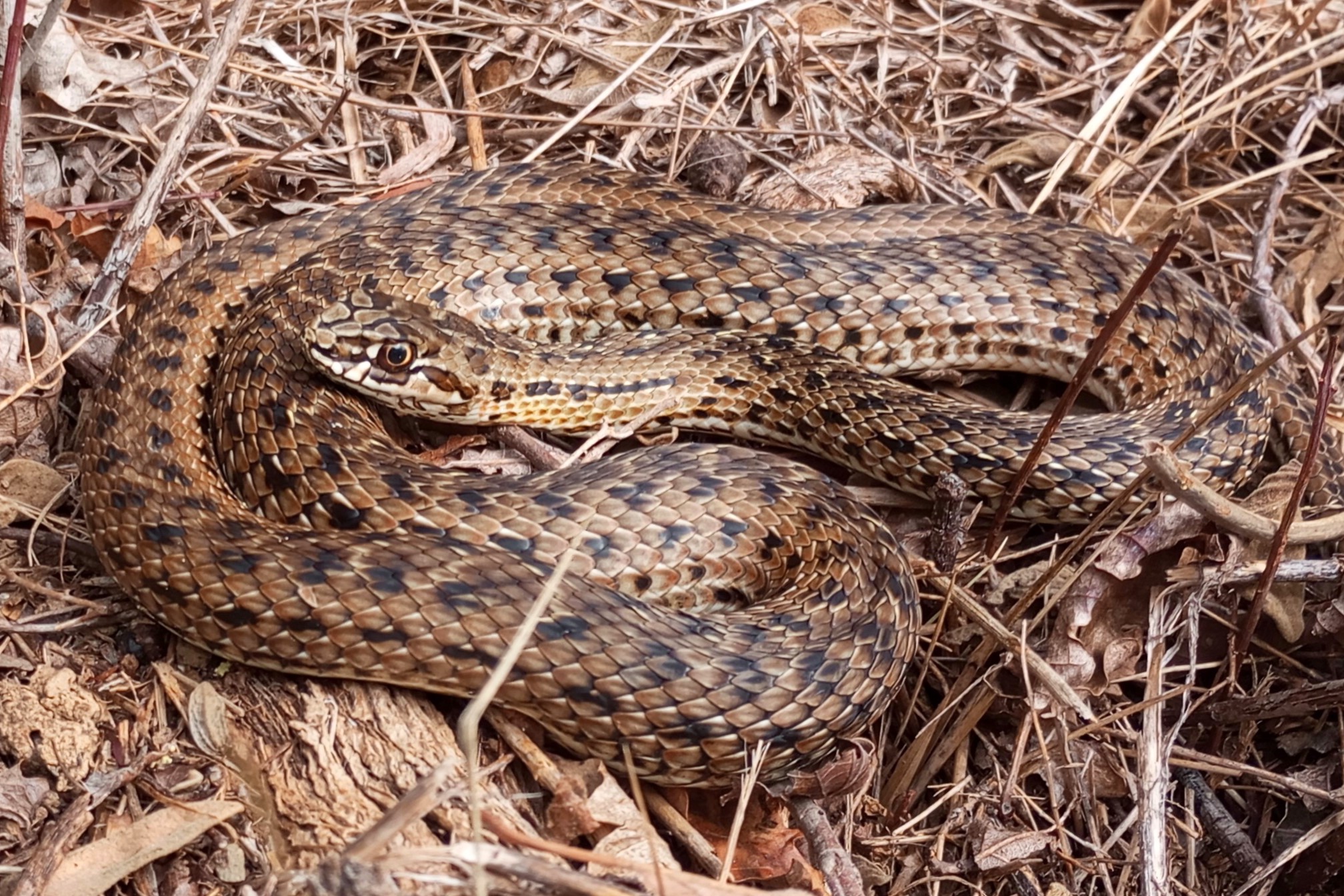
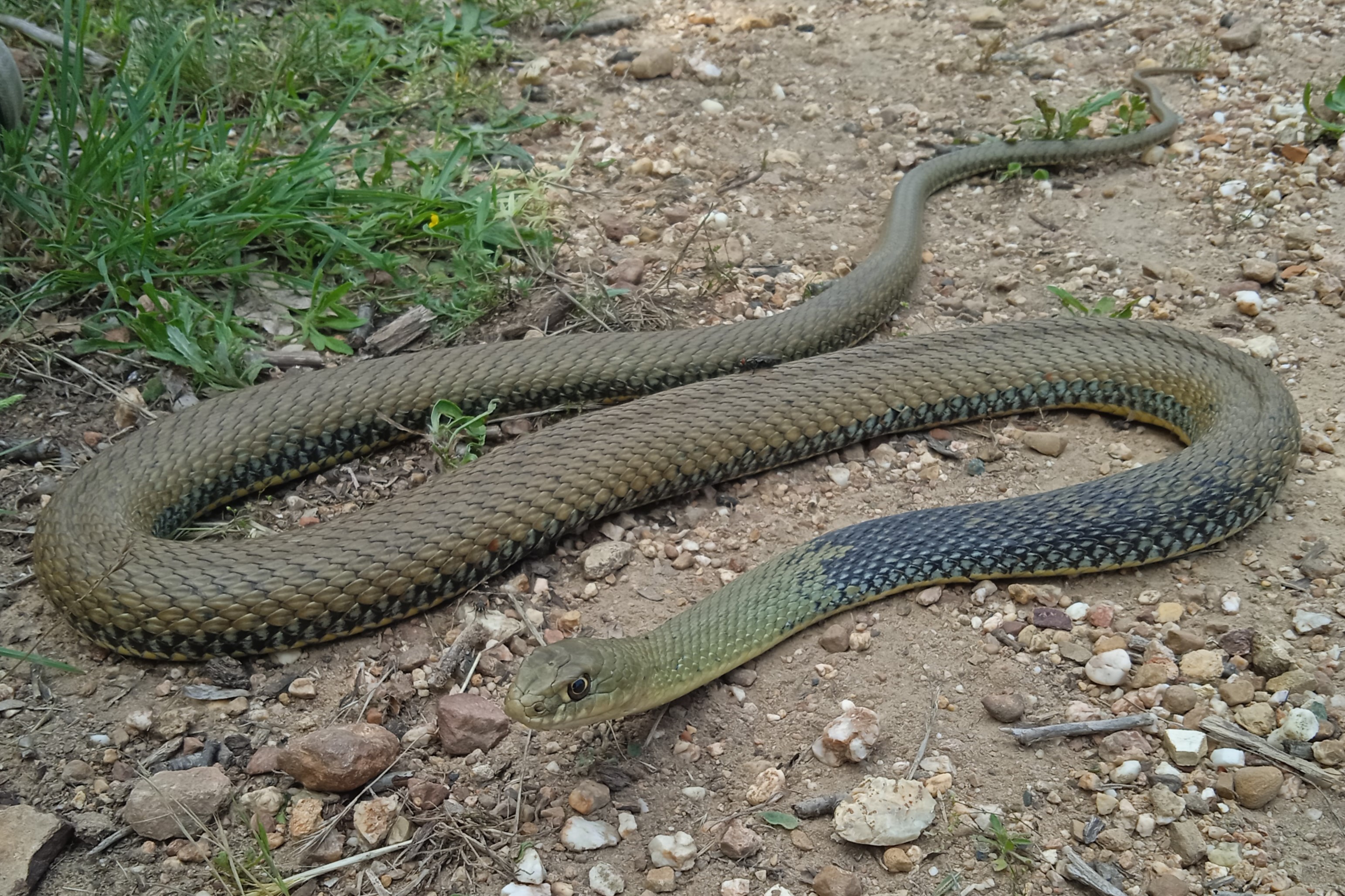


Reptilia → Squamata → Serpentes → Colubridae → Malpolon → Malpolon monspessulanus
Bissa Rataja, Bissa Oxelea, Oxelaira
The Montpellier Snake ( Malpolon monspessulanus ) is without doubt the largest snake in the province of Savona, often exceeding 79 in (200 cm) in total length.
The body is especially robust in the midsection, and the head, triangular and prominent, has large sunken eyes bordered by pronounced supraorbital scales, giving the animal its typical “wrinkled” expression.
The pupil is round, while the iris ranges from yellow to orange or brown.
Strong sexual dimorphism is evident in size, with males being noticeably larger than females.
Adult males show a uniformly brownish-green coloration, with a typical dark "saddle" on the neck, sometimes extending to the sides, and a head lighter than the body; the belly is whitish or dark gray, usually with no blotches.
Females and subadults have different colorations, ranging from sandy gray to tawny, adorned with white and black lines along the whole body and orange-tinted supralabial scales.
In these specimens the saddle marking is less evident and becomes more pronounced only beyond a length of 26 in (65 cm).
Juveniles, similar to females, still show brighter hues and more accentuated contrasts.
The dentition is opisthoglyphous, characterized by venomous fangs located at the back of the upper jaw.
The Montpellier snake has a continuous distribution in the western Mediterranean basin, encompassing the Iberian Peninsula (Spain and Portugal), southern France, Liguria and northwestern Italy, as well as the northwestern region of North Africa (Morocco, coastal Algeria and Western Sahara).
In Italy, the species is mainly limited to western and central Liguria, with a significant presence in the province of Savona, especially along the coast and in lower hill areas.
Although in the past it was occasionally observed above 3,281 ft (1,000 m), more recent records indicate it is found mainly up to 2,625 ft (800 m) above sea level.
Its presence has also been documented on Gallinara Island.
In Liguria, it is represented by the western subspecies Malpolon monspessulanus monspessulanus, which seems not to cross the Tyrrhenian watershed.
A strongly thermophilic species, the Montpellier Snake prefers sunny and arid environments typical of the Mediterranean landscape: shrublands, garrigue, terraced olive groves with stone walls, cultivated areas, uncultivated lots rich in bushes, and even more or less urbanized areas.
It is not uncommon to encounter it near rivers and streams, especially in open and stony sections.
Its adaptability also brings it to the edges of roads and abandoned dumps.
The Montpellier Snake is a diurnal and strictly terrestrial snake, known for its great speed of movement and its shy yet alert nature.
Its activity begins with the first warmth of spring, generally already in early March, and continues until the onset of winter dormancy, which depending on climatic conditions may begin at the end of October or even in November in warmer areas.
The breeding season starts in late spring: the male is territorial and usually the female lives in the same area.
After mating, the female lays up to 20 eggs in natural cavities or under stones, bark, and debris, including man-made materials.
The young are born between September and October, already active and capable of reaching lengths of 10 in (25 cm).
A very efficient generalist predator, adults feed mainly on small mammals such as rodents of various species (reaching sizes comparable to a young rabbit), birds, adult lizards such as the Ocellated Lizard ( Timon lepidus ), and occasionally other snakes, including conspecifics.
The diet of juveniles is centered on small lizards and large terrestrial insects.
Predation occurs via a quick bite and subsequent body coiling while waiting for the venom, injected by the rear fangs, to act and immobilize the prey.
In nature, adult Montpellier Snakes may fall prey to large birds of prey such as the Short-toed Snake Eagle (Circaetus gallicus) and the Golden Eagle (Aquila chrysaetos), although the main threat is human activity: unjustified fear of snakes often leads to their direct killing by humans, and accidental road mortality is also sadly frequent.
Juveniles face additional risks, such as predation by Wild Boar (Sus scrofa) and other opportunistic mammals.
Among Ligurian snakes, the Montpellier Snake is the most tolerant of high summer temperatures; this feature is linked to its ability to secrete a protective oily coating from specific glands near the nostrils, which also helps spread a distinctive “wild” smell.
Extremely alert, it hunts mainly by sight, often keeping the front half of its body raised and making rapid lateral head movements useful both for searching prey and for detecting predators from a distance.
In threatening situations, it does not hesitate to display aggression: it flattens its head, hisses, and may attempt to strike with its mouth wide open.
The venom of the Montpellier Snake, though similar to that of venomous elapids like cobras, has relatively low toxicity compared to that of vipers; given the position of the venomous fangs (opisthoglyphous), the risk to humans remains minimal.
In case of a prolonged bite, localized burning and swelling may occur, but no serious consequences or deaths have been reported in the literature.
The lethal dose of venom for small rodents is estimated at several dozen mg/kg, but for humans the clinical risk is negligible.